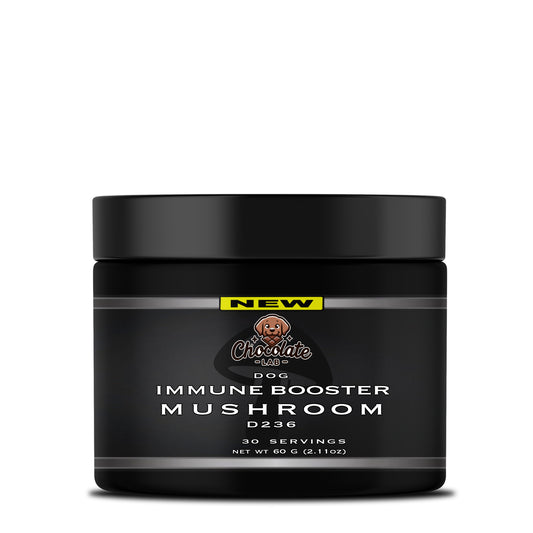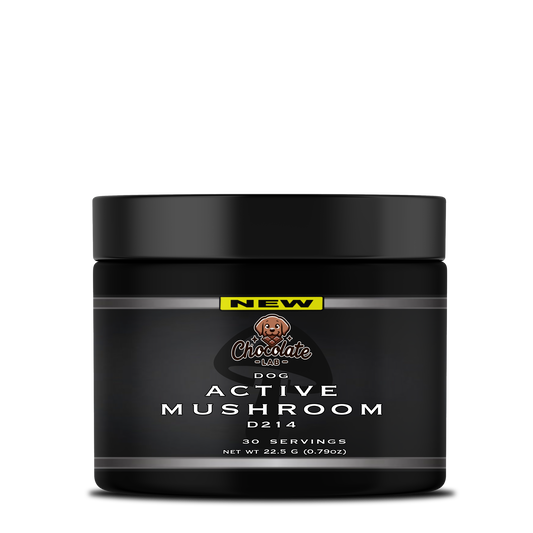
Teacup Labradoodle: Dog Breed Information, Facts, Puppies, & Tips
Teacup Labradoodle: Petite Pups, Facts, Myths, and Adorable Pictures
Published on
Updated on
"Unveiling the Mystique Teacup Labradoodle: A Comprehensive Guide"

| Aspect of Teacup Labradoodle | Detailed Information |
|---|---|
| Breed Overview |
Teacup Labradoodles: A delightful blend of the Labrador Retriever and Toy Poodle. - Type: Miniature version of the Labradoodle - Traits: Combines traits of the Labrador Retriever and Toy Poodle |
| Size and Growth | - Weight: Under 15 pounds - Height: 10-16 inches |
| Temperament | - Nature: Friendly and sociable, great with families and other pets - Intelligence: Quick learners, easy to train |
| Coat Characteristics | - Varieties: Black, chocolate, cream, gold - Feature: Hypoallergenic, minimal shedding |
| Health Considerations | - Breeding: Genetic testing essential - Common Issues: Dental problems, hypoglycemia, joint issues |
| Breeding Practices | - Focus: Health and temperament - Parentage: Small Poodle and Labrador Retriever |
| Care Requirements | - Nutrition: Diet for small breeds - Exercise: Moderate, includes daily walks and playtime - Grooming: Regular grooming necessary |
| Training and Socialization | - Importance: Crucial for behavioral development - Approach: Responsive due to high intelligence |
| Owner Responsibilities | - Breeder Selection: Choose reputable breeders - Veterinary Care: Essential routine check-ups and vaccinations |
| Myth Dispelling | - Size: More robust than "teacup" suggests - Health Myths: Healthy with responsible breeding |
| Final Consideration | - Compatibility: Suitable for various lifestyles - Commitment: Requires care, understanding, and affection |
🌟 Important Note: A Teacup Labradoodle is a delightful companion that blends the best of its parent breeds. They require dedicated care and understanding to thrive, making them a joyful addition to the right home.
Table of Contents for "Comprehensive Guide to Teacup Labradoodles"
- Teacup Labradoodle: A Comprehensive Guide
- Introduction to Teacup Labradoodles
- Understanding Teacup Labradoodles
- Teacup Labradoodle Puppies
- Exploring Teacup Labradoodle Facts
- Teacup Labradoodle Pictures
- Dispelling Myths Surrounding Teacup Labradoodles
- Responsible Ownership of Teacup Labradoodles
- Conclusion
Introduction to Teacup Labradoodles

Teacup Labradoodles, a delightful blend of the Labrador Retriever and Toy Poodle, are increasingly becoming a popular choice among dog enthusiasts. These charming canines are not only compact and cuddly but also boast a hypoallergenic coat, making them ideal for a variety of living situations and lifestyles. Their growing popularity is a testament to their adaptability, temperament, and minimal shedding, appealing to a broad audience from families to single pet owners.
Growing Popularity of Teacup Labradoodles
- Increased Interest: A steady rise in their popularity over the past decade.
- Urban Appeal: Perfectly suited for apartment living due to their small size.
- Allergy-Friendly: Hypoallergenic coats make them a top choice for allergy sufferers.
🌟 Quick Tip:
When considering a Teacup Labradoodle, think about your living situation and lifestyle to ensure this breed is the right fit for you.
Understanding Teacup Labradoodles

Definition and Characteristics

Teacup Labradoodles are a miniature version of the standard Labradoodle, typically weighing under 15 pounds. They inherit the intelligence and hypoallergenic coat of the Poodle, along with the friendly and loyal nature of the Labrador Retriever.
Size Variations and Traits
- Weight: Under 15 pounds
- Height: 10-16 inches at the shoulder
- Coat Types: Range from wavy to curly
- Color Varieties: Includes black, chocolate, cream, and gold
Breeding Practices for Teacup Labradoodles
Ethical breeding is crucial for the health of Teacup Labradoodles. Reputable breeders focus on healthy lineage, avoiding genetic issues common in miniature breeds.
Breeding Standards Chart for Teacup Labradoodle
| Aspect | Standard Criteria | Importance Level | Assessment Age | Breeder Tips & Practices | Health & Genetic Testing |
|---|---|---|---|---|---|
| Size and Weight | |||||
| Height | Approximately 14-16 inches at the shoulder | High | Adult (1-2 years) | Selective breeding for size consistency | - |
| Weight | Typically under 25 pounds | High | Adult (1-2 years) | Monitoring diet and exercise | - |
| Coat and Color | |||||
| Coat Texture | Wavy to curly, hypoallergenic | High | Puppy (6-12 months) | Ensuring both parents have desirable coat traits | - |
| Coat Colors | Variety (cream, gold, red, chocolate, black, etc.) | Moderate | Puppy (6-12 months) | Breeding for specific color patterns | - |
| Temperament | |||||
| Behavioral Traits | Friendly, intelligent, trainable | High | Puppy (3-6 months) | Socialization and temperament testing | - |
| Compatibility with Families | Good with children and other pets | High | Puppy (3-6 months) | Observing interactions with different groups | - |
| Health Standards | |||||
| Genetic Health | Free from hereditary diseases common in Poodles and Labradors | Essential | Before breeding | Choosing genetically healthy parents | Hip and Elbow Dysplasia, PRA Testing |
| Overall Health | Good physical condition and no chronic illnesses | Essential | Before breeding | Regular vet check-ups and health screenings | Complete Health Checkup |
| Breeding Ethics | |||||
| Breeding Frequency | Limited to ensure female health | Essential | Adult (1-2 years) | Adhering to recommended breeding frequency | - |
| Breeding Age Limit | Not beyond 6-7 years for females | Essential | Adult (1-2 years) | Monitoring age and health for breeding | - |
🌟 Quick Tip:
Always choose a breeder who prioritizes health and ethical breeding practices over mere size reduction.
Teacup Labradoodle Puppies

Birth and Early Development
Teacup Labradoodle puppies require careful nurturing from birth, focusing on health, socialization, and early training.
Critical Growth Stages:
- Birth to 3 Weeks: Neonatal phase, crucial for initial health.
- 4 to 8 Weeks: Socialization period, vital for temperament development.
- 8 to 12 Weeks: Early training and bonding period.
Care and Training Tips for Puppies

Care and Training Tips for Teacup Labradoodle Puppies
| Aspect | Details | Frequency | Age to Start | Tips & Tricks | Recommended Products |
|---|---|---|---|---|---|
| Care Requirements | |||||
| Nutrition | Balanced diet for small breed puppies | With each meal | From weaning | High-quality puppy food for small breeds | Puppy Food |
| Socialization | Exposure to various environments | Regularly | As early as possible | Positive experiences in different settings | Socialization Toys |
| Vet Visits | Health check-ups and vaccinations | As per vet schedule | From 8 weeks | Regular health monitoring | - |
| Training Essentials | |||||
| House Training | Teaching bathroom habits | Consistently | From 8 weeks | Reward-based approach | Training Pads |
| Basic Commands | Sit, Stay, Come, etc. | Daily | From 10 weeks | Positive reinforcement techniques | Training Treats |
| Leash Training | Getting comfortable with a leash | Daily | From 12 weeks | Short, enjoyable walks | Puppy Harness and Leash |
| Crate Training | Safe and comfortable confinement | Gradually | From 8 weeks | Making the crate a positive space | Comfortable Crate |
| Bite Inhibition | Teaching gentle mouth behavior | During play | From 8 weeks | Redirect biting to appropriate toys | Chew Toys |
| Grooming Habits | Brushing, bathing, nail trimming | Regularly | From 10 weeks | Gentle introduction to grooming tools and routines | Puppy Grooming Kit |
Common Health Considerations
- Nutrition: High-quality diet specific for small breed puppies.
- Vaccinations: Up-to-date vaccinations and regular vet check-ups.
- Socialization: Exposure to different environments and people.
🌟 Quick Tip:
Regular veterinary visits are essential for monitoring your puppy's growth and development.
Exploring Teacup Labradoodle Facts

Teacup Labradoodles are not only adorable but also possess a friendly and trainable nature. Understanding their temperament and needs is crucial for a harmonious pet-owner relationship.
Temperament and Behavior
Known for their affable and sociable nature, Teacup Labradoodles make excellent companions. They are generally easy to train and adapt well to various family settings.
Behavior Traits:
- Friendly: Great with children and other pets.
- Intelligent: Quick learners, responsive to training.
- Affectionate: Loyal and loving towards their owners.
Exercise and Grooming Needs

Despite their small size, Teacup Labradoodles need regular exercise and grooming to maintain their health and coat.
Teacup Labradoodle Exercise and Grooming Chart
| Aspect | Details | Frequency | Duration | Tips & Tricks | Recommended Products |
|---|---|---|---|---|---|
| Exercise Needs | |||||
| Walks | Moderate-paced walking | Daily | 20-30 minutes | Use a harness for better control | Walking Harness |
| Playtime | Indoor and outdoor play | Daily | 15-20 minutes | Interactive toys to stimulate the mind | Interactive Toys |
| Training Sessions | Obedience and tricks | 2-3 times a week | 10-15 minutes | Positive reinforcement techniques | Training Treats |
| Grooming Requirements | |||||
| Brushing | Hair care | 2-3 times a week | 10-15 minutes | Use a soft-bristle brush to avoid skin irritation | Grooming Brush |
| Bathing | Hygiene maintenance | Every 3-4 weeks | 20-30 minutes | Gentle dog-specific shampoo | Dog Shampoo |
| Nail Trimming | Foot health | Monthly | 5-10 minutes | Careful clipping to avoid cutting the quick | Nail Clippers |
| Ear Cleaning | Prevent infections | Every 2 weeks | 5-10 minutes | Gentle ear cleaning solution | Ear Cleaner |
| Dental Care | Oral hygiene | Daily | 5 minutes | Regular brushing with dog-specific toothpaste | Dental Chews and Toothbrush |
Teacup Labradoodle Pictures

Showcase of Adorable Teacup Labradoodle Images
Teacup Labradoodles charm with their varied coat colors and expressive faces. Pictures help illustrate their unique features and adorable expressions.
Visual Representation of Different Coat Colors
- Black
- Chocolate
- Cream
- Gold
Endearing Features

Their physical characteristics, from their soft, curly coats to their bright, engaging eyes, make them particularly photogenic and endearing.
Picture Gallery Characteristics:
- Facial Expressions: Capturing their playful and loving nature.
- Size Comparison: Illustrating their petite stature in various settings.
- Coat Varieties: Showcasing the diversity in their coat colors and textures.
🌟 Quick Tip:
Photographing your Teacup Labradoodle in natural light can enhance their coat's natural color and texture.
Dispelling Myths Surrounding Teacup Labradoodles

Addressing Misconceptions About Size
Despite their name, Teacup Labradoodles are not extremely tiny; they are a smaller version of the standard Labradoodle but still robust and active.
Common Size Myths:
- Too Fragile: They are sturdier than their "teacup" name suggests.
- Constantly Tiny: They grow to be a practical and manageable size.
Debunking Myths Related to Health Concerns
Misconceptions about their health and behavior can lead to misunderstandings about the breed.
Clarifying Misconceptions About Temperament
| Myth | Reality |
|---|---|
| Prone to Numerous Health Issues | With responsible breeding, they are generally healthy. |
| Difficult to Train | Highly intelligent and trainable. |
🌟 Quick Tip:
Educate yourself on the breed from reliable sources and experienced breeders to understand the true nature of Teacup Labradoodles.
Responsible Ownership of Teacup Labradoodles

Choosing Reputable Breeders
Selecting a reputable breeder is crucial for ensuring you get a healthy and well-socialized Teacup Labradoodle.
Breeder Selection Checklist:
- Health Testing: Confirms genetic health of the parents.
- Transparency: Open about breeding practices and puppy lineage.
- Support: Offers guidance for puppy care and training.
Providing Proper Care, Nutrition, and Veterinary Attention

Owning a Teacup Labradoodle involves commitment to their health, nutrition, and emotional well-being.
Creating a Safe and Loving Environment
- Nutrition: Balanced diet tailored for small breeds.
- Exercise: Regular physical and mental stimulation.
- Veterinary Care: Routine check-ups and vaccinations.
🌟 Quick Tip:
Create a safe and nurturing environment for your Teacup Labradoodle, considering their small size and energetic nature.
Conclusion

Teacup Labradoodles are more than just their adorable appearance. They are intelligent, affectionate, and make wonderful companions for a variety of lifestyles. Understanding their needs, debunking myths, and committing to responsible ownership are key to a happy and healthy life with these delightful dogs.
Recap of Key Points
- Understand Their Nature: They are intelligent, friendly, and adaptable.
- Responsible Ownership: Emphasizes ethical breeding and proper care.
- Health and Happiness: Ensuring their physical and emotional well-being is crucial.
Encouraging Responsible Ownership and Understanding

Owning a Teacup Labradoodle can be a rewarding experience, filled with love and joy, as long as their needs are met with care and understanding.
Product and Blog Recommendations:
Product for Optimal Care:
Ensure your Teacup Labradoodle's health with our dog sleep aid, designed to support digestive health and overall well-being.
Informative Blog Post:
For further insights into this breed, check out our article Are Labradoodles Hypoallergenic, providing valuable information for potential and current owners.







































